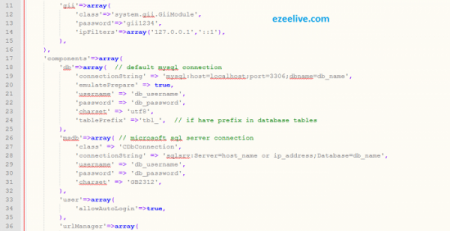Find and Replace Data in MySQL Database
Here the below examples To find a string in a certain field and replace it with another string in MySql Database. To find and replace data in a MySQL database, you can use the UPDATE statement with the REPLACE() function. Here’s a general example of how you can do it:
SET name = REPLACE(name, ‘old_string’, ‘new_string’): Updates the name column by replacing occurrences of ‘old_string’ with ‘new_string’. Replace name with the name of your column and ‘old_string’ and ‘new_string’ with the strings you want to replace and the new strings, respectively.
Single Row :
update [table_name] set [field_name] = replace([field_name],'[string_to_find]','[string_to_replace]');
Multiple Row :
update [table_name] set [field_name_1] = replace([field_name_1],'[string_to_find_1]','[string_to_replace_1]'), [field_name_2] = replace([field_name_2],'[string_to_find_2]','[string_to_replace_2]') ....;
Multiple Conditional :
update [table_name] set [field_name] = replace([field_name],'[string_to_find]','[string_to_replace]') WHERE [condition];
In SQL Server :
BEGIN TRANSACTION; UPDATE tbl_name SET column_name=REPLACE(column_name,'text_find','replace_this'); COMMIT TRANSACTION;
Replace using RegEx in MySQL:
MySQL does not support replace with Regular Expression (RegEx), but you can install lib_mysqludf_preg library to do something like.
UPDATE tbl_name
SET col_name = PREG_REPLACE('regex_match', 'replace_value', col_name);
The point before run replace statement:
1. Assure your SQL statement before the run in the LIVE environment or keep the backup copy in safe place, There is no UNDO operation or statement available.
2. Changes will be affected/ visible immediately in the frontend.
Disadvantages of Update and Replace date in MySQL
Lack of precision:
The REPLACE() function operates on a string level, which means it does not differentiate between different occurrences of the search string that may have different meanings in different contexts. For example, if you’re replacing a substring that occurs in multiple places within a longer string, it will replace all occurrences indiscriminately.
Performance impact:
Performing find and replace operations on large tables can be resource-intensive and may impact database performance, especially if the table is heavily indexed or if the operation needs to be done frequently.
Potential data corruption:
If not used carefully, find and replace operations can lead to unintended changes in data. For instance, if the search string is too broad, it might unintentionally replace instances where it shouldn’t, leading to data corruption.
No transactional support:
Unlike some other operations in MySQL, such as UPDATE statements, the REPLACE() function does not support transactions. This means that if something goes wrong during the operation, it cannot be easily rolled back, potentially leading to data inconsistencies.
Limited to string data types:
The REPLACE() function is designed to work with string data types only. It cannot be used to replace values in numeric, date, or other non-string data types.
Case sensitivity:
By default, the REPLACE() function is case-sensitive. This means that it will only replace occurrences that match the search string exactly. If you need to perform case-insensitive replacements, you’ll need to use additional functions or specify case-insensitive collation.












Leave a Reply